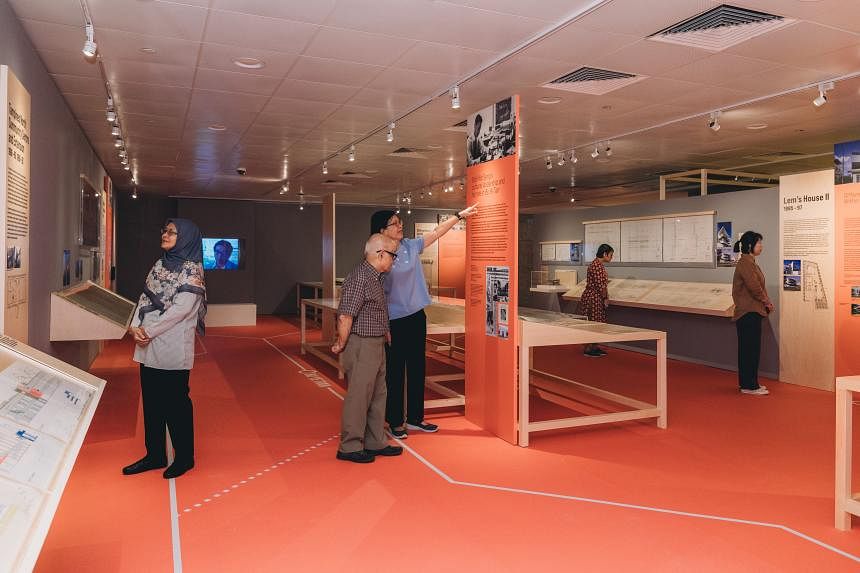SINGAPORE - Boat Quay is today protected from redevelopment as one of Singapore’s conservation areas, but its fate was not as certain in the 1980s amid the decade-long Singapore River cleanup.
Concerned about the fate of the historic area and its decaying 19th-century buildings, entrepreneur and poet Goh Poh Seng teamed up with architect William Lim and other friends to draw up a proposal for 110 Boat Quay shophouses to be conserved and turned into a cultural and lifestyle hub.
While the proposal was never executed, it was presented to the Government in November 1982, pre-dating the eventual protection of the shophouses in 1989 as one of Singapore’s first 10 conservation areas.
Records from Mr Goh and Mr Lim’s conservation plan, including a painting by watercolourist Ong Kim Seng, are on display at The URA Centre in Maxwell Road as part of the Singapore Architecture Collection’s first major exhibition.
The exhibition, To Draw An Idea: Retracing The Designs Of William Lim Associates – W Architects, was launched on Nov 28 and features 19 projects from the architecture firm between the 1980s and 2010s through more than 500 archival materials and artefacts that the company donated to the collection.
Founded by the late William Lim in 1982, William Lim Associates was renamed W Architects in 2003 when he retired.
The firm is behind projects such as the National Museum of Singapore’s contemporary extension and the National University of Singapore’s Lee Kong Chian Natural History Museum.
Managed by the National Library Board (NLB), Urban Redevelopment Authority (URA) and National Heritage Board, the Singapore Architecture Collection aims to document and preserve the country’s modern and contemporary architecture by way of photos, drawings, oral history recordings and other artefacts.
Ms Yap Lay Bee, URA group director of architecture and urban design, said that beyond inspiring the design community, the collection deepens the public’s understanding of the city and how architects have contributed to it.
The exhibition’s lead curator, Mr Ronald Lim, said the Boat Quay project broadens the narrative on conservation here. It shows that in the early days of discussions on Singapore’s conservation policy, even those in the private sector were invested enough in the cause to formulate a proposal.
He said the exhibition aims to demystify the work of architects in Singapore and unpack their roles as designers and professionals, including how they work within government regulations.
One way this is done is through the diversity of drawings on display, including sketches of initial ideas, architectural renders needed for the tendering process and those used to instruct contractors.
These drawings also show how the profession has modernised, with hand-drawn diagrams giving way to digital renderings over time.
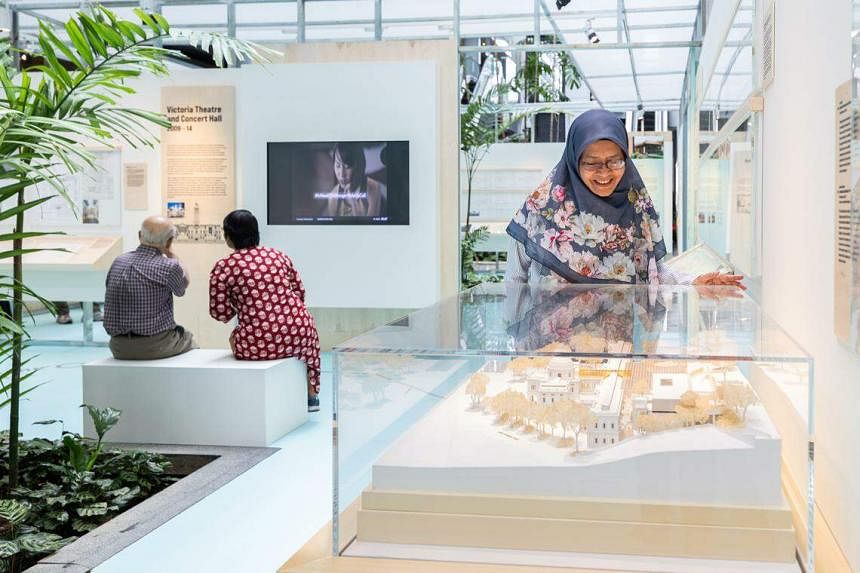
The exhibition has three zones: Refract, Respond and Reflect.
Refract shows how global movements such as post-modernism were applied to the Singapore context, such as in the design of the Tampines North Community Centre, completed in 1989.
Respond explores how external forces, such as planning requirements and regulations, inform architectural work, as borne out by private housing projects. Reflect shows how architects’ personal influences can be seen in their work.
For instance, Mr Ronald Lim said W Architects managing director Mok Wei Wei’s works are a reflection of his Chinese education. This is evident in the thread of duality that runs through his projects, where two disparate elements come together and complement each other.
Take, for example, Mr Mok’s work on the National Museum of Singapore’s modern wing. The steel, glass and concrete structure, completed in 2006, is juxtaposed against the museum’s original building – a neoclassical national monument completed in 1887.
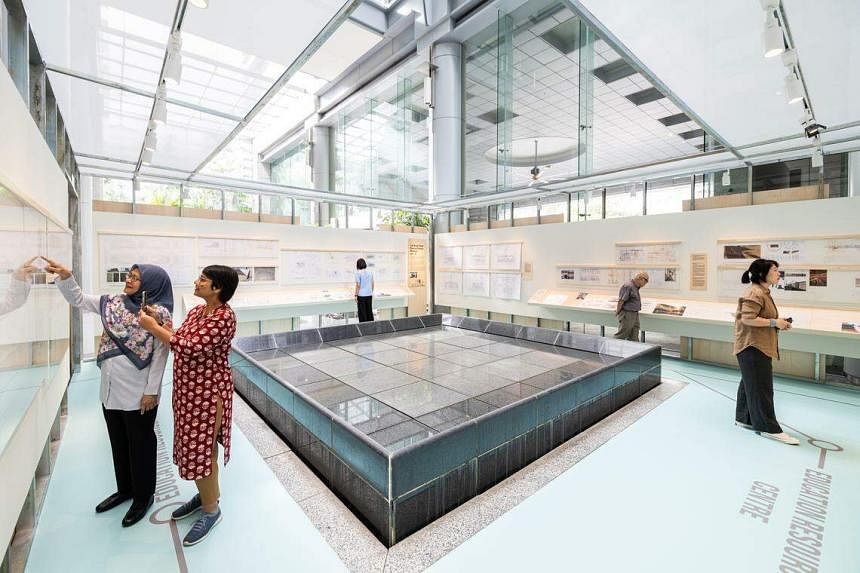
Mr Lim said he hopes that through the exhibition and the collection’s other programmes, the public will realise that architecture and buildings are part of the country’s culture, like films and art.
Mr Mok said the range of artefacts in the collection reflects the “creative endeavour of architects”, adding that materials and plans of unrealised or demolished projects are especially valuable as the only tangible remnants of their work process.
Second Minister for National Development Indranee Rajah, who launched the exhibition, said she hopes it will inspire architects and others in the built environment sector to consider contributing their materials to the collection.
The assistant director of NLB’s Singapore and South-east Asia collections, Ms Gladys Low, said the extent of the material that W Architects donated was among the reasons it was featured in the collection’s first major exhibition.
She added that the collection approached other architects including Mr Tay Kheng Soon, Datuk Seri Lim Chong Keat and Mr Sonny Chan.
Ms Yap of URA said they are among an initial cohort of 12 pioneering architects the agencies have commissioned architectural historian Wong Yunn Chii to research – a task she said was urgent, given the age of these architects.
Dr Wong’s work includes compiling the seminal works of these architects and conducting oral history interviews with them.
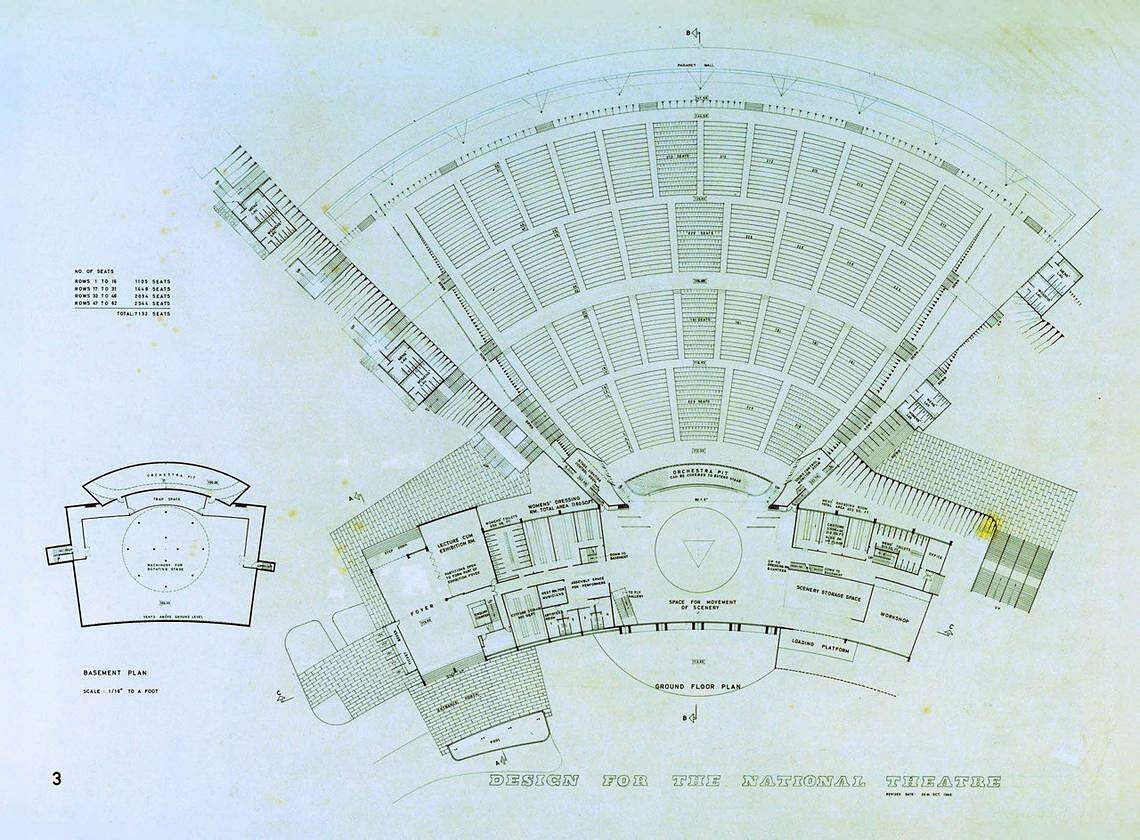
NLB’s Ms Low said the continuing collection of materials is especially beneficial for future generations. These materials, she added, will accrue value over time as more people come to appreciate the stories behind the urban environment they inhabit.
Alongside To Draw An Idea, NLB on Nov 28 also launched Dare To Design: Singapore Architecture 1960s-2000s, a satellite exhibition that curator Hannah Yeo said features eight iconic buildings in Singapore. These include demolished buildings, such as Pearl Bank Apartments and the National Theatre.
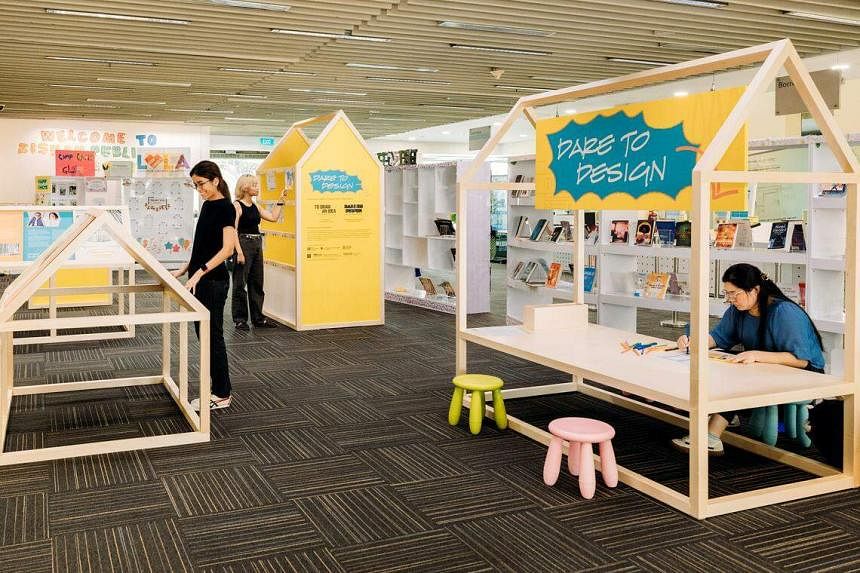
The exhibition at the National Library Building tells the story of Singapore’s development through the eight buildings, which “pushed the envelope for architecture at that moment in time”, said Ms Yeo.
URA’s Ms Yap said the Singapore Architecture Collection aims to stage another major exhibition in 2025 to mark Singapore’s 60th birthday. An exhibition of URA’s draft masterplan, which will chart Singapore’s future development, will also be held that year, she added.
Referring to the two exhibitions, she said: “It’s a nice way to look back but also look forward at what the future will be.”
Visit To Draw An Idea: Retracing The Designs Of William Lim Associates – W Architects
- Where: The URA Centre
- When: Nov 28, 2023 to June 8, 2024
- Time: 9am to 5pm daily, closed on Sundays
- Sign up for tours and talks on https://go.gov.sg/tdai-progrm-collection
Visit Dare To Design: Singapore Architecture 1960s–2000s
- Where: National Library Building lobby
- When: Nov 28, 2023 to June 9, 2024
- Time: 10am to 9pm daily
- Roving displays at Bishan Public Library (Nov 28, 2023 to Jan 31, 2024); Jurong Regional Library (Feb 1 to March 31, 2024); and Tampines Regional Library (April 1 to June 9, 2024)
